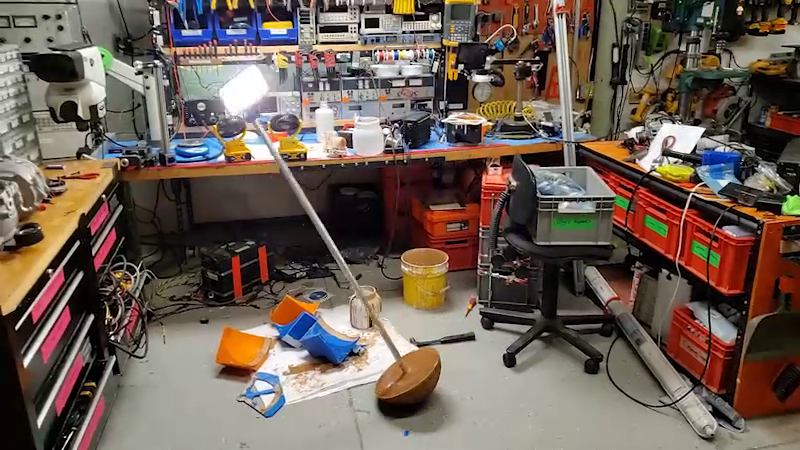
We mentioned last week how robotaxi provider Cruise was having a no-good, very bad week, after one of their driverless taxis picked a fight with a semi, and it was revealed that amorous San Franciscans were taking advantage of the privacy afforded by not having a driver in the front seat. It appears that we weren’t the only ones to notice all the bad news, since California’s Department of Motor Vehicles issued an order to the company to cut its robotaxi fleet in half. The regulatory move comes after a recent Cruise collision with a fire truck, which injured a passenger in the taxi. Curiously, the DMV order stipulates that Cruise can only operate 50 vehicles during the day, while allowing 150 vehicles at night. We’d have thought the opposite would make more sense, since driving at night is generally more difficult than during daylight hours. But perhaps the logic is that the streets are less crowded at night, whereas daytime is a more target-rich environment.
We’ve been harping on this page over and over about the potential for unintended consequences from the push to remove AM radio from the infotainment systems of modern cars, particularly from electrically noisy EVs. Our position has been that as outmoded and generally unloved as AM radio may be, it still serves the purpose of providing broad access to news and information in the event of an emergency. As if to prove that point, part of the response to the tragic Maui wildfires has been the deployment of four RadioSTAT AM transmitters, to keep survivors in Lahaina apprised of the latest relief effort news. The transmitters are basically a shack-in-a-box configuration that can be set up quickly by one person. They’re only around 10 watts, so their range is limited; they’re actually marketed for use with roadside signs that advise you to tune to a certain frequency for traffic or weather information. But this seems like a great alternate use case for them, and a fantastic example of why AM radio really should be considered critical infrastructure.
Speaking of noise, if your listening tastes run to the white (or brown, or pink) variety, it looked for a while last week like Spotify was not your friend. The streaming service is apparently not happy with the increasing number of creators whose channels offer nothing but noise, which a lot of people depend on to help manage anxiety, fight tinnitus, or even just mask out background noise to get a good night’s sleep. The company seems to find it hard to turn a profit on content like this, to the tune of a $38 million annual loss. We honestly can’t see why this would be so; at first we thought there might be extra costs for storing such content, since white noise isn’t appreciably compressible. But that seems overly techie, so it probably has a more business-y reason, like rights or royalties. Either way, that’s pretty serious money, enough that the company was seriously considering banning noise channels altogether. For some reason they didn’t, though, so your favorite fans-blowing, waterfall-splashing channels are safe for now.
It’s been a while since we’ve heard from our friends at TVCOG, the Tech Valley Center of Gravity in Troy, New York. We visited the hackerspace way back in 2015 and were very impressed with the hybrid model they employed of combining a hackerspace with a tech incubator. So when we got word of an upcoming TVCOG hackathon, we just had to get the word out. We can say with great confidence that TVCOG really knows how to put on a hackathon, so if you’re going to be in the area the second weekend in October, get yourself over to the Quackenbush Building in downtown Troy and get hacking.
And finally, if like us you’re not a welder, but occasionally try to hot-glue pieces of metal together in the garage, you might want to take a few minutes to watch a video that’ll scare the pants off you. “The Top 5 Ways to Die While Welding” is a bit of a Scared Straight! intervention that’ll get you thinking before picking up that MIG torch. We were prepared to laugh off most of these warnings, having suffered nothing worse than a few little burns for all our many minutes of welding experience. But no longer — welding is a dangerous business if you don’t respect the tools and use a little common sense. We’ll let you enjoy the decidedly Aussie presentation and make up your own mind about how much of a death trap each proposed scenario actually is, but we’ll tell you this: we’ll always make sure we know exactly where the WD-40 can is from now on.






0 Commentaires